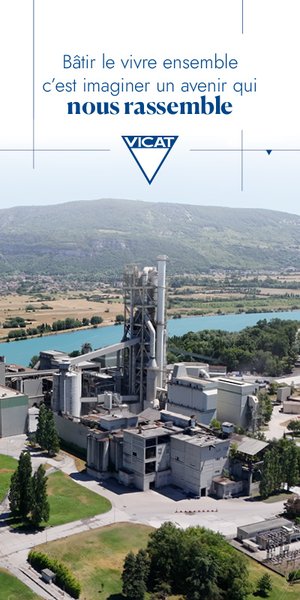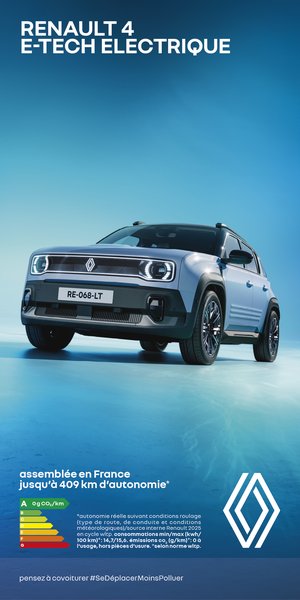Politique Internationale — For energy producers as well as for consumers, energy efficiency has become an inescapable notion. Control of consumption so as to consume less has practically become a leitmotiv. And yet, the demand for electricity only rises everywhere in the world. How can this paradox be explained?
Valérie Faudon — Demographic evolution is the first cause of this acceleration. The World Bank forecasts that there will be 9 billion human beings in 2050. This rise will be accompanied by a catching up by emerging countries in electricity consumption: it must be recalled that today a billion people still do not have access. The situation of towns is very interesting: in 2020, more than 55 per cent of the world population is to be found in towns, or 4.2 billion individuals. By 2050, projections forecast that this figure will climb to 6.7 billion. In less than 10 years, the urban population will soar again and this will probably not be the end. In developing countries, where the urbanisation phenomenon is even more intense, the increase in demand for electricity has to be seen in the light of rural exodus: when they move to towns, people change the way they consume. It is no longer biomass that will allow them to heat their food but electricity. They discover in parallel new needs such as heating or air conditioning, lighting or the recourse to household electrical goods, all hungry for electricity. Be careful, it’s not their energy consumption that rises — on the contrary, it falls, since biomass is not too efficient and is very energy-consuming — but their consumption of electricity. The new town-dwellers are confronted with new uses of energy in which electricity plays the preponderant role.
P. I. — The evolution of home life, no matter how profound, is not alone in boosting demand for electricity…
V. F. — Everywhere in the world, the growing electrification of means of transport is contributing to the rise in demand. More a city is dense, the easier it is to develop collective transport (metro, trams and buses) as well as fleets of self-service electrical vehicles. These facilities allow a reduction in greenhouse gases over time, but also improve the quality of life by reducing congestion on the roads and pollution. Let’s take a city such as Shenzhen in China: the buses are now all electric — some 19,000 units — and 21,000 taxis will soon follow. The future “Sidewalk” city project developed by Google in Toronto is very clear: two-thirds of movements will be effected by public transport, on foot or by cycling, the remaining third going to small electric vehicles thanks to a specially dedicated auto-sharing service. After urbanisation and transport, “smart cities” are the third big lever of growth of electricity consumption: of course, “intelligent cities” sometimes get bad reviews because of the possible leaks of personal data, but new technologies have become indissociable from the management of urban collectivities. The examples of tools put in place for this are legion: a device that optimises the functioning of traffic lights at cross-roads; that which manages the delivery circuits of commercial chains; or the one that develops shared rides. Of course, this new range of tools and services must be examined closely by the competent authorities with regards to respect for individual liberties, but it is clear that it is useful to people. Today’s city is electric and tomorrow’s will be even more so.
P. I. — Does this rise in the consumption of electricity concern all sorts of towns all over the world or are there big variations between one region and another?
V. F. — Before going any further, I should like to stress that the phenomena that I have just mentioned — urbanisation, the rise in electricity demand, smart cities — are not trends in dotted lines but they are backed up by figures. Reports by the World Energy Council (WEC) and the Renewable Energy Policy Network for the 21st Century (REN21) provide some precious information. They are complemented by a lot of statistical material coming from several organisations. As for the typology of towns as concerns their electricity consumption, the three big zones that are North America, Europe and Asia each have their specifics. In the United States, the weak density of population — with very extended conglomerations such as Dallas or Los Angeles — means that movements are mostly effected in cars with combustion engines. In Asia, where the density is much more pronounced, it’s the opposite: the demand for electricity is very high to respond to people’s mobility needs. If we consider the unity of reference to be the giga-joule per inhabitant — that is their electricity consumption for moving around — we see that London, Paris or Frankfurt have quite similar thresholds.
P. I. — Of course, cities need electricity more and more: the logic is one that is at the same time practical, economic and technological. Where in this does the climate issue fit?
V. F. — The climate emergency guides all the thinking. The rampant urbanisation — from 2030, 700 cities will have more than 1 million inhabitants and 40 will have more than 10 million — is all the more under observation because it contributes so strongly to global warming: more than 75 per cent of direct CO2 emissions are produced by towns, with a major impact in terms of pollution. In this context, the experts of the Intergovernmental Panel on Climate Change (IPCC) insist on the need for strengthened energy efficiency to keep to the aims of the COP21. Let us remember that the Paris agreement enshrined the limit of the rise in temperatures to 2 °C by 2100 with the hope of being closer to 1.5 °C under the most dynamic scenario. But, still according to the IPCC, gains in energy efficiency are not enough: the scientists’ trajectories also bank on a doubling of the share of electricity in total consumption of energy, to overtake 40 per cent in 2050. The production of low-carbon electricity is in effect a crucial stage in offering an alternative to the fossil — especially in transport — and to act effectively against CO2 emissions. It is not superfluous to point out that the electric motor consumes not only less primary energy than the combustion engine but it is also much more respectful of the environment. By the end of 2018, some observers were surprised to see the IPCC encourage the development of the nuclear industry. The explanation is simple: since the production of electricity by the atom does not produce any CO2, the longevity of this sector is not really contested.
P. I. — Among the planet’s megapoles, which are the most virtuous in terms of energy consumption?
V. F. — The struggle against CO2 is a goal that is more and more defined. For proof, according to REN21, some 10,000 cities have already adopted reduction targets for their greenhouse gas emissions. If we take the metropoles, a good 20 of them have promised carbon neutrality by 2050. Of course, this concerns only representatives of developed economies — such as New York, London, Paris, Copenhagen or Barcelona — but the countries of the south are not absent. Simply, they have to make coincide the climate emergency with the necessity to equip their populations with a greater number of infrastructures, energy-consuming industrial programmes that are indispensable to allow these countries to make headway in providing facilities. Given the density per inhabitant of the areas concerned, the protection of the air and management of refuse are two subjects of major concern. The REN21 report recalls that the objectives set by the cities are accompanied by a number of operational measures that do not allow them, for the moment, to fix a standard model of de-carbonisation. According to the typology of the cities and continents — especially on the climate level — the part of energy use undergoes considerable fluctuations between the weight of heating, air conditioning, transport or the specific consumption of electricity for one or other activity. But this diversity does not stop them working on a global methodology to struggle against global warming: the Carbon Neutral Cities Alliance (CNCA) is working on this and encouraging the biggest world cities to work together to reduce CO2 emissions. Beyond the importance of local initiatives, the CNCA underlines the need for unfailing support of institutional actors. In other words, isolated actions, or those arising from the particular case of one city, should not be underestimated, but the more they are part of a general framework, promoted by government policies, the more efficient they will be.
P. I. — Let’s talk about electricity supplies for a town: the most virtuous formula requires 100 per cent renewable energy. Some environmental associations foresee entirely green scenarios from 2050, just as much for gas (via biomethane) as for electricity. Are these aims realistic?
V. F. — I shall take the example of the Paris region because it is very demonstrative. In its last report on the subject, RTE (Editor’s note: the EDF subsidiary that manages the high-tension and very high-tension network) foresaw a rise of 13 per cent in electricity consumption in the Île-de-France region between now and 2030. One point: this rise incorporates the gains realised by way of energy efficiency. The development of renewable energy certainly offers an extra source of electricity production but it is very far from being able to respond to the rise in demand. In 2018, despite the boom in solar (+13 per cent) and wind (+30 per cent) combined with the input of biomass, the Île-de-France did not produce more than 5 per cent of its electricity consumption. For supply security, the region remained heavily dependent on the nuclear power stations of neighbouring regions that are capable of functioning 24 hours a day. This example is not an isolated case: despite the surge in green energies, it is still the French nuclear park that remains in pole position to supply the country with de-carbonised electricity.
P. I. — You recall the necessity to rely on nuclear power to contribute to the de-carbonisation of cities. But how can this idea be acceptable to the citizen? How can it be made admissible for power stations to be built near large urban centres? We know that the civilian atom arouses some great fears…
V. F. — Today nuclear power stations are installed a long way from urban centres, which creates no problems for supplying cities because electricity is very easily transported. It should be noted that those who live close to these plants do not in general share the fears that you mention: they know in effect the characteristics of this type of plant, the way in which safety controls are effected and they are regularly informed of the site’s activity. It should also be noted, and this will become more and more important in the future, that nuclear power stations have the advantage of having a very low footprint on the ground: they produce a lot of electricity on very little land. This means of production does not contribute to the cementing over of the land and it is very protective of biodiversity. Beyond the electricity question, there is more and more talk of small nuclear reactors that, in the future, could serve to de-carbonise urban heating networks, which are also greatly responsible for CO2 emissions. These small modular reactors (SMR), with a capacity of 10 to 300 megawatts, have to include new safety models so as to be close to towns. A country like Finland is currently working on a project for SMRs designed to supply its urban heating networks. These smaller reactors are also likely to be buried. In brief, a number of obstacles that currently hamper nuclear development could disappear thanks to this technology.
P. I. — Would you say that mayors have understood the necessity of de-carbonisation and are ready to intensify their policy in favour of electricity?
V. F. — Mayors are first and above all pragmatic. The solutions that they prefer are those that contribute to the wellbeing of their fellow citizens. I am not saying that these elected officials are not worried about the future of the planet but their concerns are more down to earth: what quality of life can I bring on a daily basis to my citizens who are also my voters? Mayors know that they will be judged on the basis of very concrete actions. In this respect, the security of the electricity supply is a very high priority. One could think that developed economies have perfectly locked down this aspect, but this is not the case: in the summer of 2019, right in the month of August, a city such as London was hit by a breakdown of a huge scale which deprived more than a million inhabitants of electricity for between 15 and 50 minutes. Immediately, some 1,500 trains were cancelled or delayed and some sensitive establishments such as a hospital and an airport saw the threat of an incident that could be long-lasting. This example is symptomatic: it shows just how big cities must arm themselves against the risk of a blackout. In its recommendations, the CNCA calls for a two-step move: on one hand, to increase the local production of renewable electricity; on the other, to establish partnerships aimed at de-carbonising deliveries of imported electricity, which cover equally well the supply of nuclear energy as the planning of an intelligent network such as the Sidewalk project in Ontario: the supply of the province relies firstly on the national network, which is very low in carbon thanks to nuclear power, but at peak hours, a local combination of solar production, batteries and a motivational tariff system should help avoid exaggerated use of the national network which is more carbonised at those moments. More than ever, the concept of a balanced electricity mix is becoming the rule.
* Executive Director, the French Nuclear Energy Company, Société Française d’Énergie Nucléaire (Sfen).



















